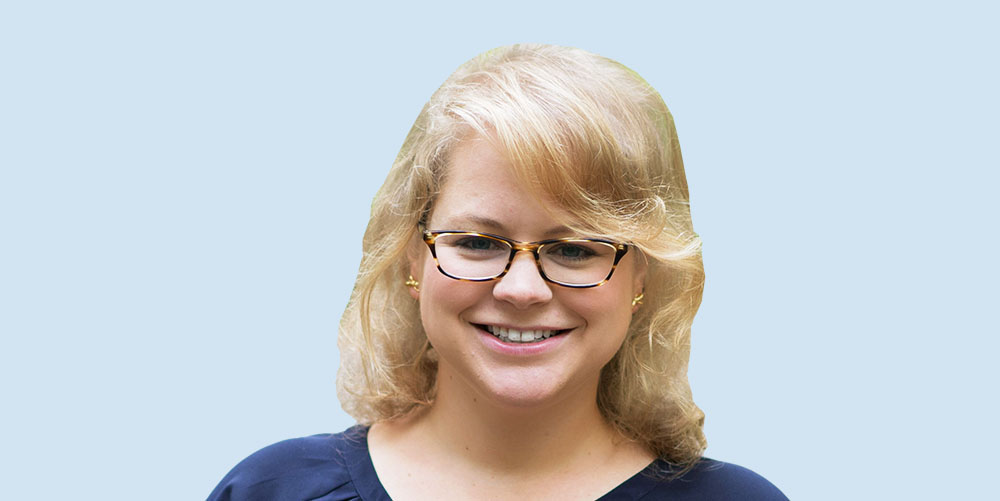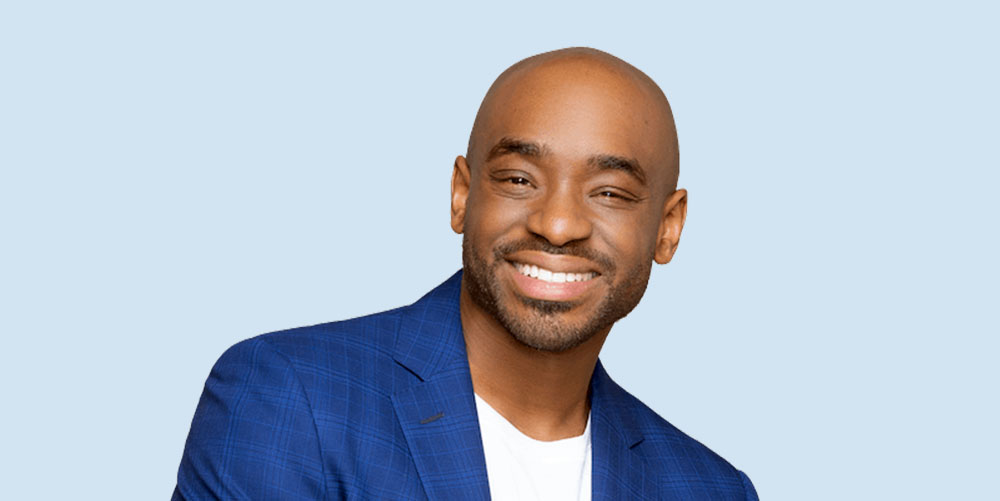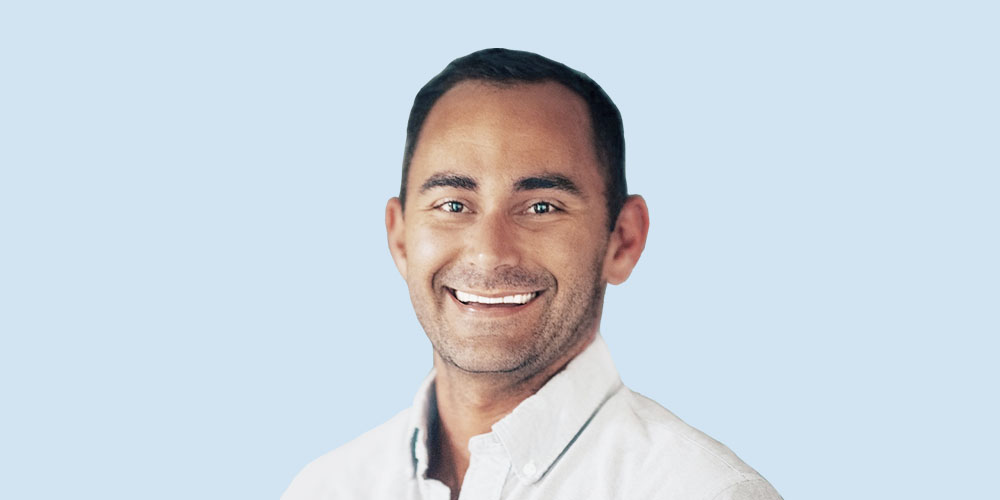Customer interviews are essential whether you’re a SaaS founder, a part of the product team, in customer support, or in another role. This skill can help you at and beyond work.
Unfortunately, most resources on customer interviews cater to the needs of user experience professionals. This gap in resources led Michele Hansen to write her book, Deploy Empathy:
“I found that there was really a gap in the kinds of resources around how to interview customers. Specifically people who are not coming from a UX background but who need to learn how to understand customers. There’s some absolutely amazing books on this written for UX researchers and I wanted to break it down a bit more.”
What’s the recipe for success? Michele says it’s all about how you ask the questions, and how you treat the person you’re interviewing.
Watch the recording below for the full video version, or read on for the key takeaways.
Don’t wait for the muse. Apply this step-by-step method to write high-performing email campaigns in hours, not weeks.
Tip 1. Use a gentle and curious tone of voice
“The tone of voice you use really makes a difference. And I suggest talking to people as if they’re a treasure grandparent or older relative of yours.”
By regarding them as someone who is knowledgeable, wise and can teach you something useful. By doing so, we also remove as much judgment from your voice as possible.
For example, instead of saying “why did you click that button?”, a gentler way of saying it would be “can you just tell me why you clicked that button right there?”.
Tip 2. Use validating statements
These validating statements are used to reaffirm the customer. However, reaffirmation doesn’t mean that you necessarily agree with their idea or experience. According to Never Split the Difference author Chris Voss:
“The beauty of empathy is that it doesn’t demand you agree with the other person’s ideas.”
By using validating statements, you are neither agreeing nor disagreeing. It’s a tool to help you build trust with someone so you can establish that they are in control of the narrative.
“You almost want to make them forget that you’re a person who has opinions and judgments and feeling. This is all about them.”
Here are some examples of validating statements you can use during interviews:
- “That makes sense.”
- “That sounds time-consuming.”
- “I can see why you’d do it that way.”
- “Would you be able to walk me through the context behind that?”
- “I can see what you’re saying.”
- “It sounds like this is frustrating/time-consuming challenging.”
- “Can you tell me more about X?”
- “It makes sense that you’d do it that way.”
- “It sounds like there are several steps involved. Im curious. Can you walk me through them?”
- “It sounds like a lot goes into that.”
Michele shares that starting a sentence with “that” makes it sound like a fact.
“Let’s say someone has just walked you through how they spend half an hour doing a very basic task with their current product. When you say ‘that sounds…’, you’re making that sound like a fact, and you are validating their experience because it doesn’t have anything to do with them that it’s time consuming. It’s this nebulous body of task that is time consuming.”
Tip 3. Leave pauses for them to fill
Awkward silences aren’t necessarily a bad thing. In fact, this is a great opportunity to uncover the most interesting ideas from your interviewees:
“I learned this from NPR radio host Terry Gross when she hosted her long running interview show. A former producer of hers said that stuck with me was that she will wait, and wait, and wait after asking a question so the other person will fill that space and they will usually fill it with the most interesting part of the interview.”
While it will be very tempting to prompt them with leading questions, it’s best to avoid asking these questions because you’re trying to build rapport and show the interviewee that they’re in control of the conversation.
“If it does genuinely get awkward and they say, ‘are you still there?’ You can say something that compliments them like, ‘oh, I was just taking notes on that last thing you said, it sounded really good. Which will prompt them to elaborate on it.”
Tip 4. Mirror and summarize them
If you feel like you have run out of questions, you can simply restate the previous thing that they have said. Or if you want them to elaborate as well, you can mirror it.
Michele says it’s best to be parrot-like during these interviews to encourage the customer to speak more about their idea or experience:
“Think of yourself that way that you’re repeating back to them. And the more you repeat things back to them, the deeper they’re going to go.”
Tip 5. Don’t interrupt
Not interrupting someone is one of the most important things you can do to build rapport and safety during the conversation. Michele says that this might be very difficult to do for some people, and this really takes practice.
Leaving amounts of pausing and interruptions would vary from person to person. It’s important to take note of what your innate conversation style is:
“The linguist Dr. Deborah Tannen has done research on how people from different regions leave different amounts of pausing and interruption in their natural speech.
For example, she did a recording of a conversation between some people from New York and from California. The people from the Northeast were interrupting one another to show engagement, and it was a sign that they were interested in what the other person was saying. In contrast, the person in California thought that was rude and that they didn’t have any time to talk.”
Michele notes that being mindful of your innate conversation style doesn’t mean you have to change it because it’s inherently valid. But when conducting an interview, it’s important to avoid interrupting the speaker:
“We’re trying to elevate them as the expert in this setting. We’re trying to give them control of the conversation which will help them feel safe and open up even if you’re talking about something boring like sending invoices.”
Tip 6. Use simple wording
Minimize the use of jargon
Sometimes we might use jargon to build rapport and imply that we’re part of a group or community with someone. However, this might cause some confusion:
“For example, the acronym ‘SaaS’ which I used at the beginning. If you are in SaaS, you wouldn’t register that I said that and you would understand what I said immediately. But if you’re not in SaaS, you’re like, ‘what is that like? Is she talking about being mean to people? Is she talking about sassing people? What is going on here?’ and you wouldn’t know that it means software as a service.”
So when we’re in an interview, we want to minimize the use of jargon and only use it after the other person has used it.
Rephrase “why” questions as “what” questions
While it might take more words to put together, it’s easier for someone to answer “what” questions because it doesn’t require them to build a narrative.
“We as humans love to build narratives around things where there may not have been a coherent one in the first place. So if you ask a ‘what’ question, you are going to get the steps that led up to a decision. Rather them, after the fact, coming up with a narrative basically just to impress you. We want to avoid anything that will lead them to impress you.”
For example, instead of asking “what are your objectives?”, you can rephrase it to “could you just give me some context on the big picture here? What are you trying to do overall?”
While the rephrased question definitely involves more words, it uses a “what” to ask about the steps involved and it’s not using any industry jargon.
Tip 7. Ask for clarification, even when you don’t need it
Clarification prompts elaboration:
“If I ask you to clarify something, or if I say, ‘can I just make sure that I have that right?’ and then I repeat what someone said, they will then expand upon it. And if this is something that is crucial for your product, this is very helpful.”
And if you want to level this up even further, Michele advises restating what they have said incorrectly so the interviewee could elaborate further.
It’s understandable that you might be afraid to ask for clarifications because it will make you look stupid or you’re not paying attention. But there is nothing to worry about, because you’ve already built some of the rapport with the interviewee:
“You’re doing these kinds of questions at a point where you’re probably 5 or 10 minutes in and you’ve built some rapport. If you’ve been pausing and asking questions gently, they have hopefully forgotten that you are a person and they are just ready to talk about the vendor invoice approval process and, and be willing to tell you about that.”
Tip 8. Don’t explain anything (or get defensive)
When you’ve built a product, it’s easy to fall into a tendency of explaining and/or get defensive when someone talks about it. It’s a hard instinct to squash and will take some practice to overcome.
Here’s what you can do when you might be tempted to explain how your product works:
“Let’s say you’re doing a usability section session and somebody asks: ‘what does this button do?’ You can’t tell them what it does. You need to say, ‘can you click on it and let me know what it does or what do you think it does?’ or ‘before you click on it, can you just tell me what you would expect to happen?’. And then after they click on and ask them, ‘is that what you expected to happen?’”
On the other hand, here’s what you can do when dealing with a frustrating situation:
“Someone will say, ‘oh, well the product didn’t work’ even when they’re describing a behavior that is exactly how you designed it. It can get pretty frustrating and it’s really important to not get defensive because the whole point of this is understanding their perspective and how they are experiencing something. And that is a sign of a disconnect and a potential for improvement.”
But this doesn’t mean that you dismiss those feelings of being threatened by these types of questions. Instead, it’s better to acknowledge them, exercise self empathy and use it as an opportunity to dig deeper.
Here are phrases you can use when you find yourself talking to a customer that says the product isn’t working:
- “Can you tell me how you expected it to work?”
- “I’m curious. Can you walk me through what you expected to happen?”
- “What were you hoping to use [product] for?”
Tip 9. Build on what they say
Interviews are more like improvs rather than conversations because you have to build on what the customer is saying:
“They could tell you that the sky is green and you just have to roll with it. They could misstate the name of your product and you’ve got to roll with it. You just have to keep building on it.”
Michele says that building on what they say is better because when you negate or correct them, you are reducing their position in the conversation which reduces that safety and trust that you’ve established.
Don’t wait for the muse. Apply this step-by-step method to write high-performing email campaigns in hours, not weeks.
Tip 10. Let them be the expert
It’s important to put your interviewee in the elevated position of teacher. And this is what marketing psychologist Robert Cialdini found out when he was writing his book:
“He interviewed and went undercover with various organizations (essentially doing scanning marketing). In the eighties this was like an encyclopedia salesman, timeshare sales, and things like that.
When he was done, he was usually doing some sort of apprenticeship at the end of the six months. He would say, ‘you know, I actually don’t want a job with you. I’m writing a book, I’m a professor. If I give you a free copy of my book, can I use this as an example?’ And about 50% of the people said yes. But when he instead changed that to ‘I’m a marketing professor and I came to learn from you because you are an expert in how to influence people. 100% of them said yes.”
By placing them in the position of an expert, Michele says that this will get you good insights on how to build or improve your product:
“When you are interviewing someone, remember that they are teaching you about their experience and to elevate them to that position of teacher. Everything they say might not be a hundred percent factually correct. You may not agree with it, but they are the expert of their own experience. And that is what you are trying to learn because that can help you build a better product.”
Tip 11. Use their words and pronunciation
This doesn’t necessarily mean duplicating their accent or manner of speaking. Instead, this is to use their words and pronunciation even when it differs from yours:
“Let’s say you’re interviewing someone about email marketing software and they accidentally call Mailchimp ‘MailMonkey.’
You cannot correct them and call it Mailchimp because you’re going to make them feel embarrassed. They’re going to start thinking about themselves. They’re going to start thinking about what they said and should have said. Their brain is going to run off in a different direction.”
So instead of correcting them and negatively affecting the rapport, Michele suggests to just use their term (even if it’s wrong) and continue the interview.
And if the interviewee would correct themselves later on, you can agree with the correction and move forward:
“They might even correct themselves and say, ‘oh no, actually Mailchimp. And you say like, ‘oh, of course. Yes.’ If there was any correction going on, they should correct you, which further elevates them in the conversation.”
Tip 12. Ask about past or current behavior
We don’t want people to predict the future so we shouldn’t ask about future behavior:
“It’s important not to ask them, ‘would you pay for this?’ Humans are really bad at predicting the future and especially predicting future behavior.”
Instead, we want to ask about their past or current actual behavior. For example, as opposed to asking, “how are you struggling?”, you can ask other questions like:
- “How long does it take you to do [X]?” — which is a factual question about what they’re currently doing.
- “Can you tell me more about the people you need to work with to get [X] done?” — which is a clue to how socially complicated a task is (ie. getting something done or buying a product within their organization).
- “What do you have to do before [and after] you do [thing with our product]?” — this is to build a timeline of these different steps and is a great fishing ground for further product, monetization, and marketing opportunities.
- “Thinking about the whole process to do [X] that you’ve told me about, what takes the most time?” — this is to get an idea of the time and money spent on doing something.
Michele adds that the last question is a great opportunity to get an idea if they would be willing to pay for a product or service:
“Time and money spent is a fantastic proxy for figuring out whether they would pay for something in the future. If they’re currently paying a lot of money or time for something, chances are they would pay to make that easier. However, if it’s something they’re doing infrequently or they’re not currently paying for it, it’s unlikely that they would pay for something to solve that in the future, because it’s just not a struggle for them. It’s not something they really experienced as a problem.”
Tip 13. Be a rubber duck
“This comes from the idea from the book The Pragmatic Programmer that programmers should keep a rubber duck on their desk to talk to whenever they run into bugs. And in the process of talking out the problem to the duck, they will figure it out.”
When doing customer interviews, the important role you play is that of the rubber duck:
“I like to picture myself as a rubber duck in these interviews which reminds me that I am just there to reflect and help them figure it out, help them understand what the process is. I am not offering opinions or solutions or any ideas of my own. This is all about them.”
Tip 14. Practice with your happy customers
If you’re still developing your interviewing skills, Michele says that a great place to start would be with your happy customers:
“Start with your happy customers. This is a really overlooked group but they’re incredibly great to interview. You learn a lot from them. You’re building rapport with long-term customers and it’s really helpful to learn why something is working.”
Happy customers are those who have used the product for more than six months, which means they know how to use it and it’s likely well-integrated into their organization.
“You can really start to understand some of these patterns and then understand why people stick around, what is it about our product that makes it great and makes people stay, and who are the customers that we are already making happy.”
Michele shares that if you start with people who are negative (ie. customers who are cancelling their subscription), you’ll only see all the things that are wrong. And if in any chance that the interviewee is not in a good mood, this might discourage you from interviewing customers.
While it’s important to do those cancellation interviews, Michele suggests to take this on later when you’ve had more experience with customer interviews.
Tip 15. Acknowledge any awkwardness first
What happens if there’s a familiarity between you and the interviewee? Do you need to do a short “social dance” before you go right into the interview?
Michele says that it’s better to acknowledge the awkwardness rather than ignoring it:
“You can just start it out with saying, ‘hey Jane, it was so great seeing you at MicroConf last year. Absolutely loved that and I hope we get to do that again soon. I feel like we could talk for hours about our love of dogs. But I kinda really want to get your perspective on something. Do you mind if we just jump into it because I wanna respect your time.’”
Tip 16. Start with 30-minute interviews
While interviews would vary from how much the interviewee is willing to talk about the topic, Michele suggest that you aim for 30-45 minutes for starters:
“If you’re just starting, I suggest starting with half an hour only because spending an hour talking to a customer might feel really intimidating. You can always extend them later.”
Tip 17. Use the “reaching for the door” question to get more out of the conversation
Michele shares that when laying out her interview questions, the questions in the first 15 minutes are asked so she can build rapport and also get a bit of information from the customer:
“So my questions are really the first 15 minutes, and that is basically rapport building. And I’m getting a little bit, a bit of information too. Mostly it’s making them feel comfortable and safe and getting their brain primed on this topic.”
And then about halfway through the scheduled time, she will then ask the “reaching for the door” question.
“It’s very simple and it sounds like you’re closing the interview, but you’re not. It is something to the effect of, ‘thank you so much for taking the time to talk to me today. I really appreciate it. And I’ve learned so much from you. Is there anything else you want me to know?’”
After this question, Michele shares that the interviewee will usually fill it with the most interesting part of the interview because they’re primed on the topic and they’ve already built this trust on you because they know you are listening.
Additional resources
Michele recommends these resources on doing customer interviews:
- Inspired by Marty Cagan
- Demand-Side Sales by Bob Moesta
- Never Split the Difference by Chris Voss
Learn more from Michele Hansen
Deploy Empathy is a practical guidebook on how to do customer interviews, and a great resource for anyone looking to develop or improve their interview skills.
If you want to jump right in and practice doing interviews with your friends, family or colleagues, you can find sample interview scripts for any type of customer interview here.
Or tune in to Software Social — Michele’s podcast with Colleen Schnettler, where they talk about their respective SaaS businesses.
Don’t miss out on new articles. Subscribe to our newsletter and get your monthly dose of SaaS email marketing insights.





